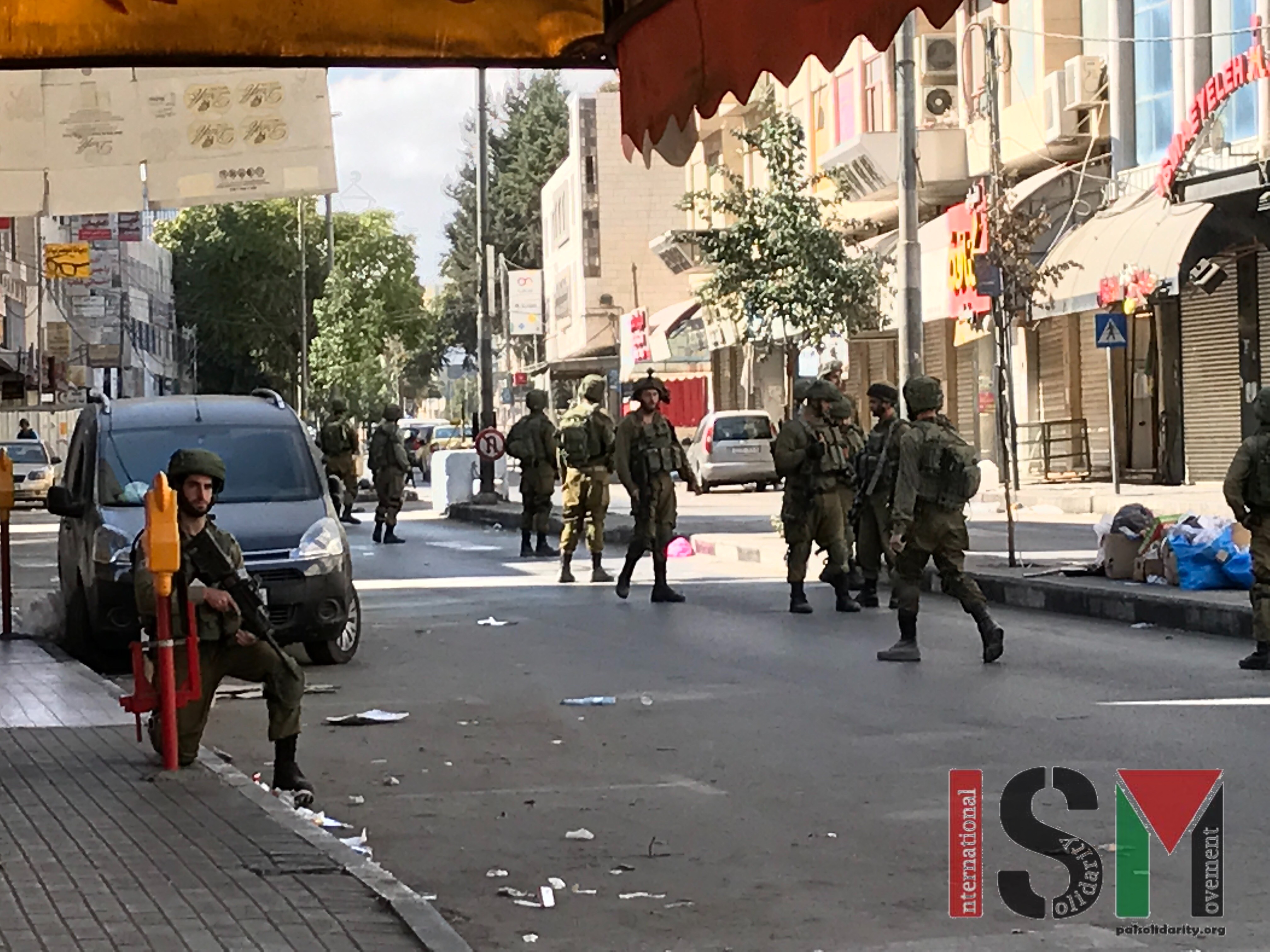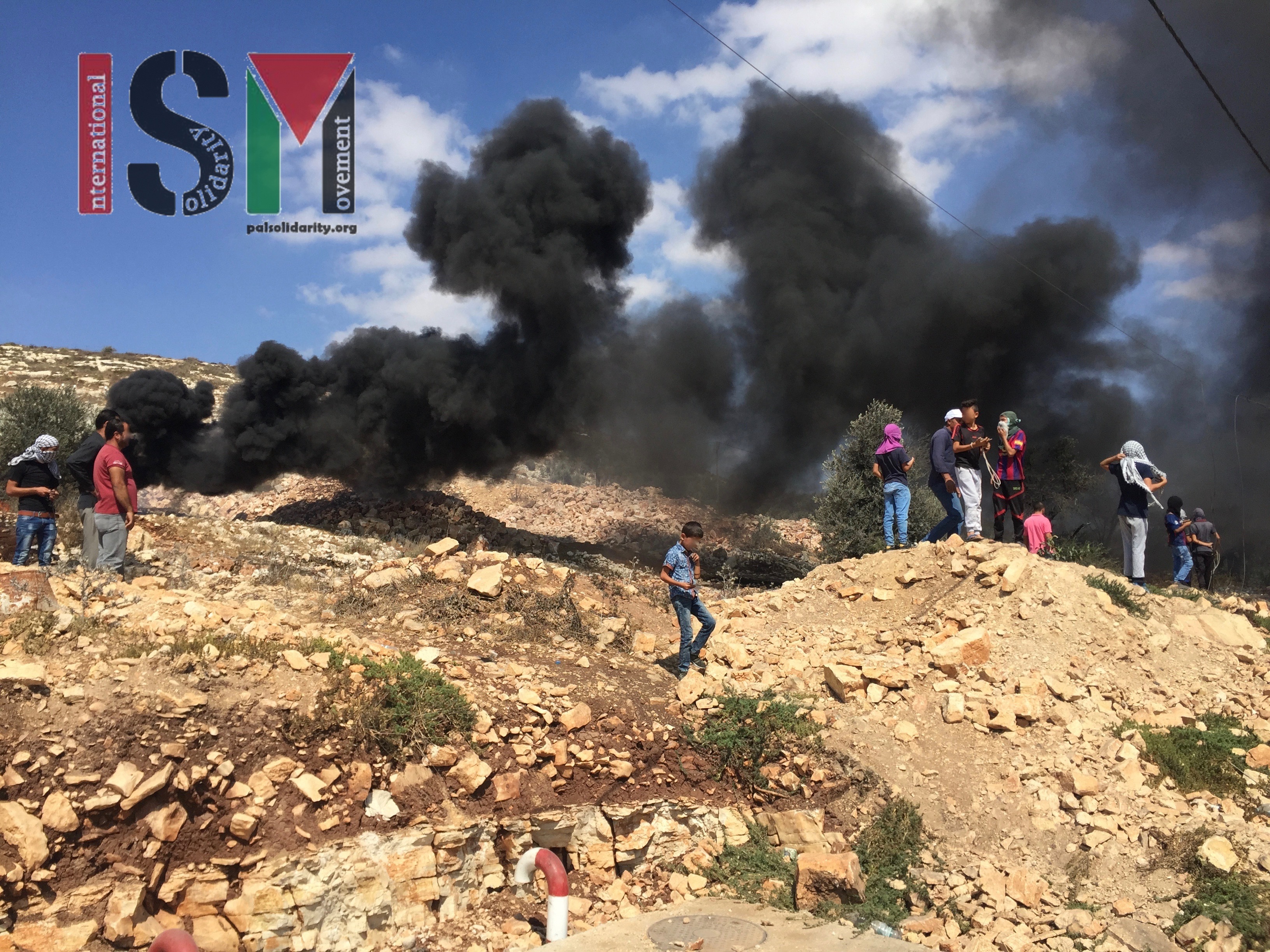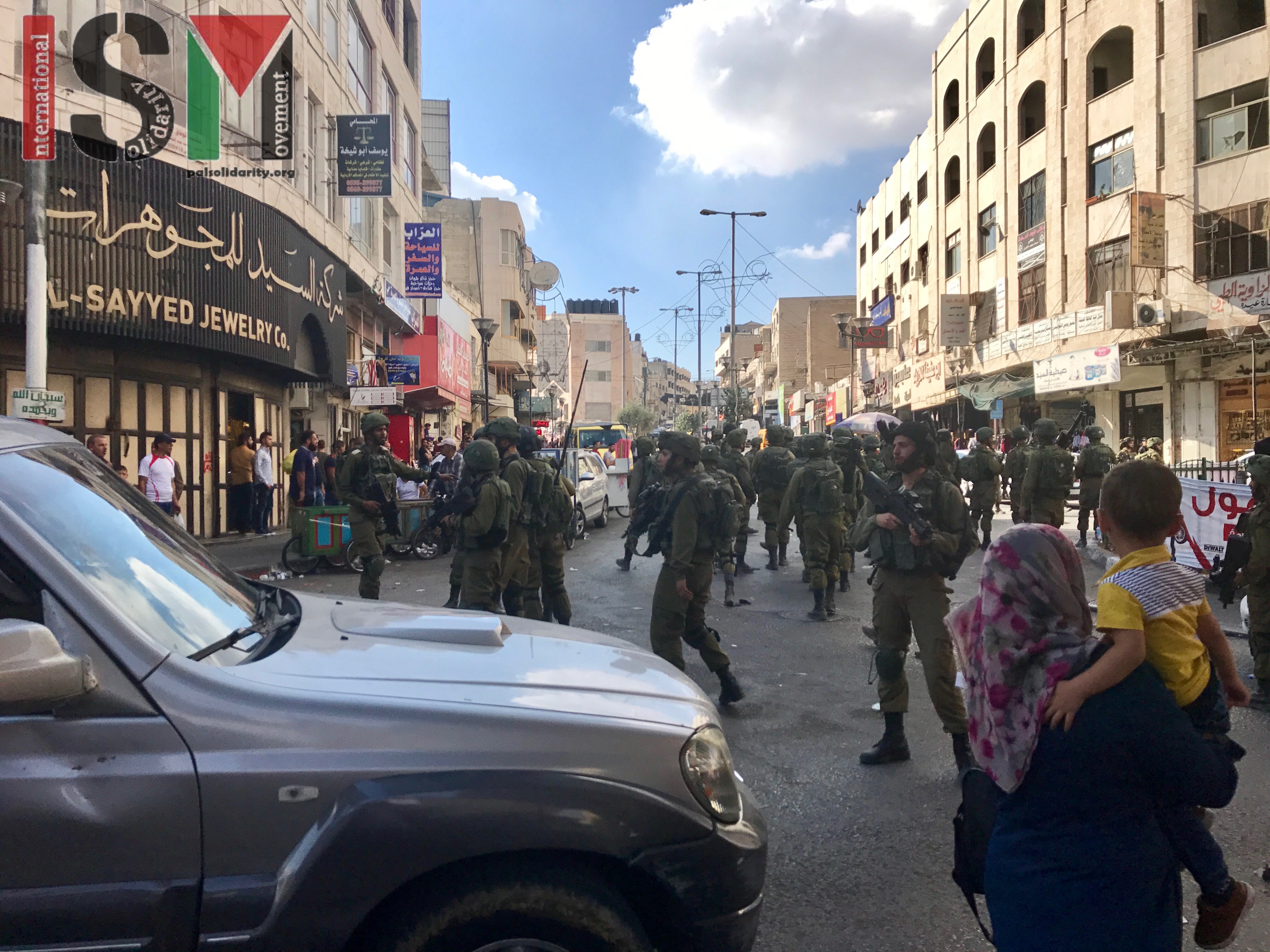Category: Reports
-
Israeli forces shoot three people and detain one in occupied Hebron
29th September 2017 | International Solidarity Movement, al-Khalil team | Hebron, occupied Palestine On Friday afternoon, the 29th of September, protests erupted in Al-Khalil near Bab al-Zawiya at approximately 2:00 PM. The military countered the protests with sound bombs and advanced into H1, shooting rubber-coated steel bullets, out of which at least three hit protesters, in…
-
Kafr Qaddum Commemorates the Beginning of the Second Intifada
29th September 2017 | International Solidarity Movement, Nablus team | Kafr Qaddum, occupied Palestine Palestinian and international activists marched in Kafr Qaddum today to recognize two important events. September 28th marked 17 years to the day since the outbreak of the Second Intifada in 2000, during which an estimated 3,000 Palestinians lost their lives, and…
-
Israeli Forces use live ammunition in occupied Hebron
22nd September 2017 | International Solidarity Movement, al-Khalil team | Hebron, occupied Palestine On Friday, September 22, the usual small scale and unorganised protests next to the Shuhada checkpoint elicited an exaggerated response from the Israeli military. At 2:00 PM approximately 15 soldiers went into H1 in pursuit of the protesters, firing tear gas and…



